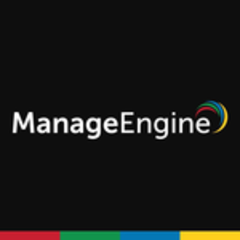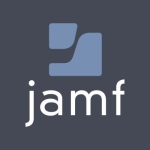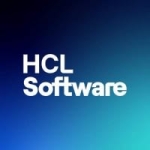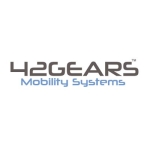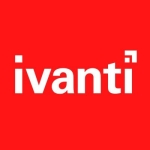
Patch management improves with automated updates and comprehensive software inventory
Pros and Cons
- "ManageEngine Endpoint Central has its own database to check patches without needing to go to the vendor."
- "Usability is the main issue when comparing ManageEngine with BlackBerry RIM."
What is our primary use case?
I use ManageEngine Endpoint Central primarily for patch management and managing devices like external USBs and software inventory.
What is most valuable?
ManageEngine Endpoint Central has its own database to check patches without needing to go to the vendor. Most applications, especially Microsoft products, are included, and patches automatically pop up.
What needs improvement?
ManageEngine Endpoint Central has limited features because they offer multiple products separately, like Active Directory Manager. The usability is poor as I need to learn how to use ManageEngine, unlike other more user-friendly software.
For how long have I used the solution?
I have been using ManageEngine Endpoint Central for about one year.
Buyer's Guide
ManageEngine Endpoint Central
September 2025
Learn what your peers think about ManageEngine Endpoint Central. Get advice and tips from experienced pros sharing their opinions. Updated: September 2025.
869,785 professionals have used our research since 2012.
What do I think about the stability of the solution?
I run ManageEngine Endpoint Central on a small virtual machine and it works as expected without performance issues.
What do I think about the scalability of the solution?
I am unaware of the scalability aspect as we are a small to medium organization with less than two hundred users.
How are customer service and support?
The technical support is good, but not excellent. I last contacted them a long time ago.
How would you rate customer service and support?
Which solution did I use previously and why did I switch?
I previously used BlackBerry RIM's MDM solution.
What was our ROI?
There has been no return on investment or measurable benefits for my use cases.
What's my experience with pricing, setup cost, and licensing?
The pricing is cheaper compared to other MDM products, but I don't remember the exact details.
Which other solutions did I evaluate?
I did not evaluate other solutions. It was a requirement.
What other advice do I have?
Usability is the main issue when comparing ManageEngine with BlackBerry RIM. I would recommend Endpoint Central to others, and I rate it eight out of ten.
Which deployment model are you using for this solution?
On-premises
Disclosure: My company does not have a business relationship with this vendor other than being a customer.
Last updated: May 7, 2025
Flag as inappropriateGeneral Manager at SARJAK CONTAINER LINES PRIVATE LIMITED
Works perfectly for patch management and software deployments
Pros and Cons
- "The product works perfectly for patch management and software deployments."
- "The reports provided by the product are an area of concern where improvements are required. The visibility provided by the reports is not very attractive."
What is our primary use case?
I use the solution in my company as a ticketing system and for endpoint management. The purpose of the solution is to control user machines for remote sessions, push updates, and inventory management.
What needs improvement?
The reports provided by the product are an area of concern where improvements are required. The visibility provided by the reports is not very attractive.
Primarily, the product offers only chat support. Support via telephone should be provided to users by ManageEngine's technical team.
For how long have I used the solution?
I have experience with ManageEngine Endpoint Central for a year. My company is a customer of the product.
What do I think about the stability of the solution?
It is a very stable solution. Stability-wise, I rate the solution a nine out of ten.
What do I think about the scalability of the solution?
It is a scalable solution. Though my organization does not have any machines, the scalability would be good even if we had more machines in our company. Scalability-wise, I rate the solution an eight out of ten.
How are customer service and support?
The solution's technical support is very good. I rate the technical support a seven or eight out of ten.
How would you rate customer service and support?
Neutral
How was the initial setup?
I rate the product's initial setup phase around eight to nine on a scale of one to ten, where one point means it is difficult to deploy and ten points means it is very easy to deploy.
The solution can be deployed in fifteen to twenty days or three weeks.
Two to three engineers were required to deploy the product.
What was our ROI?
Earlier, my company had to make use of a lot of people to deploy products, especially during the installation of Zscaler, endpoint management, and anti-virus tools. With ManageEngine Endpoint Central, my company doesn't have to ask our engineers to go to the desktops of everyone in our organization to manage the deployment part since we can do it remotely using the scripts in the product. The product has helped reduce the costs attached to the engineers since the deployments can be done quickly with the solution. Deployments like the ones involving products like Zscaler, which would have taken our company two to three weeks to deploy, can now be deployed in a week with the help of ManageEngine Endpoint Central.
What's my experience with pricing, setup cost, and licensing?
The product is not costly. The product is properly priced, especially for SMBs.
What other advice do I have?
The product works perfectly for patch management and software deployments. The tool makes the lives of its users easier, and allows us to deploy any software, like the deployment of Zscaler on our company's machines.
The product's most beneficial feature for IT security posture stems from the patch updates give clear visibility of which machines are installed or missing with the important crucial patches.
The product has streamlined application management because it gives me the list of applications in my network. I get clear visibility using ManageEngine Endpoint Central's software summary report if there is an anti-virus product network and if I need to find out the machines on which it is deployed.
The product is very easy to maintain if you know about the solution.
My company does not integrate ManageEngine Endpoint Central with any other products.
ManageEngine Endpoint Central is a cost-effective product. If you are someone who looks at areas like automation and deployment and feels the need to have the correct type of reports, then ManageEngine Endpoint Central is a good product.
I rate the overall tool an eight out of ten.
Disclosure: My company does not have a business relationship with this vendor other than being a customer.
Buyer's Guide
ManageEngine Endpoint Central
September 2025
Learn what your peers think about ManageEngine Endpoint Central. Get advice and tips from experienced pros sharing their opinions. Updated: September 2025.
869,785 professionals have used our research since 2012.
Director of Information Technology at ST ANNES MATERNITY HOME
Good patch management and remote control but needs better support
Pros and Cons
- "What is great about the patch management solution, is that it patches OS, applications, browsers, plug-ins, and firmware updates."
- "Tech support is mediocre at best."
What is our primary use case?
Our agency did not have any way to manage the actual computers we provided our users. The tech support team would take such a long time to get to a user because they had to physically walk to every office to support the client.
The primary use case for this product was to have a solution in place to manage all of our endpoint devices. Now the tech team is more responsive and efficient when it comes to supporting our endpoint users. Patch management is another win-win for us due to the way it was done in the past.
How has it helped my organization?
This has a single pane of glass that allows us to manage our computers. We can now remote into computers, patch management, audit, check for issues while being virtually connected to a computer, report, and a ton of other options.
Remote control was not a solution that was in place before and it's strange to think that you can be an efficient team without a solution like this in place, however, my team did what they could prior to my arrival. The same goes for patching computers, VMs, and physical servers.
What is most valuable?
As stated earlier, the two most beneficial options for us are patch management and remote control. What is great about the patch management solution, is that it patches OS, applications, browsers, plug-ins, and firmware updates.
We can report against it and make sure that all computers, servers, and anything else that has a security concern are patched. As for Remote, this application has a ton of features associated with it, such as: remote CLI, remote execution, chat, voice call, and many more.
What needs improvement?
Tech support is mediocre at best. You sometimes get someone who knows what they are doing, but most times they trying to find their way around their own system. It really seems like support is just an afterthought. When the support issue gets escalated, it seems like there is no communication between the first-tier support tech and the second support tech, since we've had to re-iterate the entire issue from the beginning to the second-tier support person.
For how long have I used the solution?
We have been using ME (ManageEngine Endpoint Central) for about one year now.
What do I think about the stability of the solution?
The stability is OK.
What do I think about the scalability of the solution?
It scales well within their catalog of apps.
How are customer service and support?
Technical support is poor. Sometimes I needed to look for my own solution on my own time as support was not able to fix the issue.
How would you rate customer service and support?
Negative
Which solution did I use previously and why did I switch?
We did not have an alternative solution prior to ME.
How was the initial setup?
The setup is straightforward. That said, the agent sometimes works and gets installed on clients and sometimes it does not.
What about the implementation team?
I did the implementation myself.
What was our ROI?
We've had various issues that have prevented us from trying out multiple solutions so we have not had a great ROI.
What's my experience with pricing, setup cost, and licensing?
The only advice I have for others is to always look at the fine print. Talk to them and get it in writing about getting the best support possible when in need. Also, negotiate the price.
Which other solutions did I evaluate?
We evaluated a couple of other products, however, it seems, for the money, that this was the best solution.
Which deployment model are you using for this solution?
On-premises
Disclosure: My company does not have a business relationship with this vendor other than being a customer.
Sr Engineer Administrator at a university with 10,001+ employees
An in-depth and intuitive product with good cross-platform capabilities, but they should have a more global support channel
Pros and Cons
- "Its cross-platform capabilities and the ability to do both OS-level patching and third-party patching are valuable. It is difficult to find a software product that will do all that for you out of the box, and you don't have to do any configuration other than your initial setup. Once you do that, there is a very minimalistic approach to getting it operational. You can have it up and running within a 20-minute time span."
- "Their support channel could be better. They're an India-based company. They're based out of India. So, here in the States, support can be difficult when you're dealing with time zone requirements. A more global support channel would be a wise choice for them."
What is our primary use case?
It is basically an endpoint management solution. It is used for endpoint configuration and life cycle management of an endpoint. It helps you to manage the entire cycle of a machine, which includes patch management, security updates, configuration settings, and user configuration settings. It helps you with application delivery, application patching, and application removal. It provides you with all of that. It also gives you the keys to log onto the machine remotely and run commands via PowerShell script or a remote command capability.
It is a pretty in-depth product. It supports macOS and Linux. They also offer MDM now. So, you can do mobile device management, and they've got new plugins for security modeling for identifying caesar-based vulnerabilities and patch remediation. They give you configuration management tools to allow you to see if your web services are configured properly or even configured at all. It does network scanning and network vulnerability assessments, port audits, software audits, software metering, and software licensing. It is pretty in-depth.
In terms of its version, there is an ongoing update with the product. I started with version 7 or 8, and it is probably at version 11 now. They are on-prem and cloud versions of it.
How has it helped my organization?
It is pretty intuitive when it comes to where and how you need to do things. A lot of already preconfigured templates and settings are available to you. It is beneficial where you don't have to go through or do post configuration. A lot of applications have a tendency of being very end-user-heavy. For example, with System Center Config Manager, which is a Microsoft product, if you're not an engineer and you don't understand that product, you're probably not going anywhere with it, whereas with ManageEngine, you can bring some junior-level tech support. Because it does have scalability, you can assign roles to users whether they are junior help desk support engineers or senior engineers. You can also have reporting and inventory metrics that are only available to management. It provides a role-based granularity to all these key capabilities, and it makes it very easy for even non-technical people to run a program. It is based on web technologies, and a browser is all you need to really use to get to it. Obviously, you'd want to secure that web access down, but you do have role capabilities.
What is most valuable?
Its cross-platform capabilities and the ability to do both OS-level patching and third-party patching are valuable. It is difficult to find a software product that will do all that for you out of the box, and you don't have to do any configuration other than your initial setup. Once you do that, there is a very minimalistic approach to getting it operational. You can have it up and running within a 20-minute time span.
Their pre-configuration and ability to keep it simple for the end user, including the admin side, is helpful. It is not a very difficult program to bring on. It doesn't require a lot of technical skill to run. As long as you understand the technology that you're working with, you don't have to learn this program.
It has enterprise-level capabilities. They do offer a distributed version. If you need to really build it out, you could build it across the globe, or you could just run it in a small shop with 200 users or less. It is a pretty robust product.
What needs improvement?
Their support channel could be better. They're an India-based company. They're based out of India. So, here in the States, support can be difficult when you're dealing with time zone requirements. A more global support channel would be a wise choice for them.
For how long have I used the solution?
I have been using this solution for about 12 years.
What do I think about the stability of the solution?
There have been issues in the past. I've been using the product for about 12 years, if not longer. At one time, they delivered an agent that ate up your CPU and your memory. The agent is auto-install on your machine. So, out of nowhere, your entire network went down because of agent deployment. They turned around and fixed that pretty quickly. I'd probably call that their biggest flaw.
What do I think about the scalability of the solution?
It is quite scalable. Our environment is not very large, but I've seen large deployments. We have about 1,000 machines and 1,500 users, but it is possible if you want to scale it out through the enterprise. I've seen it in multi-site environments with more than 10,000 users.
For 1,500 users, in a well-trained and well-capable environment, you would probably have four people to manage your entire environment with that app.
How are customer service and support?
They should have a more global support channel.
How was the initial setup?
It is very straightforward. The more complex part is doing security hardening and configuration on the server, which includes setting up certificates, starting on two-factor, and running through all security configurations to make sure it is secure. You obviously want your server to be as secure as possible because it could be a huge hole in your environment if someone were to take control of that server or application.
What was our ROI?
I don't have the metrics, but in my personal experience with the app, our return on investment is pretty high considering the number of human resources we would have needed to do all that it can do.
What's my experience with pricing, setup cost, and licensing?
There are multiple flavors of the app. They have a distributed version for enterprises. It depends on your size. They price it on a per machine basis. 250 or 500 is probably their least amount.
What other advice do I have?
I focus primarily on security and hardening, and they've made leaps and bounds in that as well as mobile device management and cross-platform capability in terms of working with multiple vendors and multiple devices. They seem to fit the bill there.
The MDM is incorporated in the Desktop Central, and they also offer an OS deployment module. ManageEngine has a lot of modules. Desktop Central is probably made from two or three separate products. They all are combined and collaborated into what Desktop Central is. Their analyzer tools pull from different apps to build functionality into some of the bigger core applications, such as DTC or Endpoint now. It is called Endpoint Management.
I would rate this solution a seven out of ten.
Disclosure: My company does not have a business relationship with this vendor other than being a customer.
Senior Modern Workplace Expert at a insurance company with 1,001-5,000 employees
Useful for patching and software deployment, but needs a proactive remediation feature
Pros and Cons
- "One of the benefits of Desktop Central is it made the provisioning process simpler because now we have a provisioning package. We have around 1,500 laptops at the moment and all these PCs were provisioned by a provisioning package. In the provisioning package, we have integrated every aspect of renaming, deploying applications, patching, etc., so we simply execute the provisioning package and as soon as it's executed, it will install the management agent. Once the agent is installed, it will take care of all the tasks, so we don't have to sit in front of the computer to prepare the machine. This really helps us to provision the PC quickly with our agent."
- "ManageEngine could be improved by giving customers an option to perform certain actions proactively. Since I was a consultant, I worked on different products and some had advantages over ManageEngine. For example, proactive remediation—you want to proactively check something on the computers and run the script. In ManageEngine, you have the option to run the script, but Intune has the option to do so proactively. ManageEngine doesn't have this. You should have the option to act proactively, not just going ahead and fixing it once it's done. Proactive remediation should be a feature."
What is our primary use case?
We have two main use cases of Desktop Central. The first is patching, because we want to keep our systems secure. We install Microsoft security updates using ManageEngine Desktop Central every month. The second case is to deploy applications. We want to install applications to the machines from a central location. Also, we want to give access to users so they can install whatever applications they need using the self-service portal option. When there is a common application used by many users, we publish it to the self-service portal so users can install it themselves instead of contacting local IT. Those are our two main use cases of ManageEngine, but we also use it for other tasks, such as remote connection. Our local IT uses two products: ManageEngine Desktop Central and TeamViewer. We use both to connect to the remote machines.
We have the on-premise version, but we are looking to move forward to the cloud version once they start supporting data migration—at the moment, they don't support it.
How has it helped my organization?
One of the benefits of Desktop Central is it made the provisioning process simpler because now we have a provisioning package. We have around 1,500 laptops at the moment and all these PCs were provisioned by a provisioning package. In the provisioning package, we have integrated every aspect of renaming, deploying applications, patching, etc., so we simply execute the provisioning package and as soon as it's executed, it will install the management agent. Once the agent is installed, it will take care of all the tasks, so we don't have to sit in front of the computer to prepare the machine. This really helps us to provision the PC quickly with our agent.
Now, we are going to do a PC refresh. It's a big project for next year. We are going to replace all of our PCs—1,500 PCs—with a new one, for all the users, so we have big requirements for ManageEngine. ManageEngine does a lot of scripting work in the backend—including renaming the computer according to our conventions, distributing applications, patching—so when we prepare the machine, we want everything to be installed and ready to give to the user. We don't want to wait or take more time, so we've now combined ManageEngine with Microsoft's Autopilot and Intune to provision the PCs. PC provisioning is made easier with ManageEngine.
Another benefit is we have the option to pilot updates with some machines before distributing them to production, and this can be completely automated. We don't have to create said task every time for testing and deployment, so once we scope it, it relieves the time we spend each month deploying patches. It regularly runs in our schedule with the reboot options. We give reboot notifications in a user-friendly manner to employees, with the option to postpone the reboot. This relieves the time that we spend with end users since it's user-friendly.
What is most valuable?
One of the most valuable features is patching. They support third-party patching as well, so we don't have to use another product. They support both Microsoft and third-party updates, and this is one of the main functionalities that we use regularly.
The software deployment feature is also valuable because, once in a while, we need to distribute applications, such as VCO, Office applications, etc. For example, when we prepare a PC for users. We use ManageEngine to perform lots of tasks.
We also have the option to deploy scripts via ManageEngine. We use some scripts that are to be deployed during the machines' provisioning, to make sure our machines are renamed properly according to the naming conventions we want. For example, for the France region, we want FRP, France Paris, and then the serial number. We want to deploy some script that renames the PC after the machine is provisioned, and we also want to deploy background images, logon screen, logout screen, etc. So we deploy all these policies using ManageEngine.
What needs improvement?
ManageEngine could be improved by giving customers an option to perform certain actions proactively. Since I was a consultant, I worked on different products and some had advantages over ManageEngine. For example, proactive remediation—you want to proactively check something on the computers and run the script. In ManageEngine, you have the option to run the script, but Intune has the option to do so proactively. ManageEngine doesn't have this. You should have the option to act proactively, not just going ahead and fixing it once it's done. Proactive remediation should be a feature.
Another thing is, with PC provisioning, they have to make it in a modern way. They have deployment, but it's a very outdated process right now. It's a modern workplace, so you have to provision a PC live, on the go—it's not that you create images and then distribute the image to the machines. Many customers are not using this and, in fact, we are not using it. We use a modern way of PC provisioning. So they have to concentrate on that more.
There are small glitches, but it's not going to stop you from using the product. For example, when you open the configuration, you may not see the details, but if you refresh the page, you will see them. There are small glitches here and there that we can see.
For how long have I used the solution?
I began using this solution about a year ago. In the past, I implemented this solution for different customers, but now I am an end user.
What do I think about the stability of the solution?
This solution is very stable. It depends on the size of the company, though. For us, it's very stable because we don't have many machines. The overall count is 1,800 to 1,900 machines—our license is for 2,050, but we've currently only utilized 1,900. So our infrastructure is medium-sized, I would say. If you go for 10,000, 20,000, you might have some lagging in the performance, but I'm not sure.
It doesn't really require much maintenance. You just keep it as you want and regularly do a cleanup of old applications—when you delete, you have a new version of the package, so you might want to clean up the old packages—and that's it. You have automatic cleanup functionalities in the product itself. For example, if you download an update for this month and, after three months, none of the machines require this patch anymore, it automatically cleans up. You have some settings to enable so that you don't have to manually work on the cleanup.
What do I think about the scalability of the solution?
This solution is very easy to scale. We are trying to create lots of virtual machines in Azure Virtual Desktop, so we might increase our machines by another 100 or 200.
How are customer service and support?
ManageEngine's support is one of the best, I would say. We have chat support, so I can immediately ping someone in support, from my end product console, and get assistance very quickly. If I have a question, I can ask them directly; if I have technical questions, I can ask them, and they will provide an answer right away. If I write an email, it will take three to four hours. Since I was a support engineer before, I don't normally raise questions, but when I do, I normally get quick replies. Because it's a one-to-one chat, you get immediate responses from the chat window.
Which solution did I use previously and why did I switch?
In the past, when I first joined this company, we were using WSUS to patch all of our machines, but we didn't have any control over what patches were installed. We didn't have a proper reporting aspect in WSUS—we could have, but it's very complicated. We'd have to connect the information using SQL Server and pull the information, and that's lots of querying. But with ManageEngine, it's explicit. You go and collect the reports as you want, such as the number of patches installed on a machine or how many machines got a particular update. We even have the option to uninstall patches once they're installed, so we can go back to the previous patch version of the application.
Another drawback with WSUS is that you don't have the option to scale a reboot. With ManageEngine, we can give reboot notifications in a user-friendly manner to employees, with the option to postpone, and after a certain number of days, you can reboot forcefully. This relieves the time that we spend with end users, who now get a pop-up. You don't have many options with WSUS, but with ManageEngine, you do.
How was the initial setup?
The deployment process is very easy. It's a combined product, so when you install the Desktop Central EXE, you install the database on the same machine, as well as the web server components like Apache Tomcat and Observer. Basically, when you install the EXE, you just click "next," "next," "next," and then it's done. It's not a big deployment. In terms of planning, you might need a little bit of time, but that's it. It's a half-day or one-day task, not like SCCM where you have to spend a lot of effort and there are lots of technical guides, technical architectural documents, etc. So it's very user-friendly in terms of deployment, I would say.
The number of people involved in deployment depends on the size of the company. As I was a consultant before, I worked with two people, sometimes with one to six people. So it depends on the company. For example, in our company, we have only two people who manage the platform. To be honest, I cannot say that only one person can install this solution.
For us, the deployment took two to three days, but it's not a continuous three days. We installed the server component and we installed the distribution server component after two days. So on the whole, we would've spent two to three days, maximum.
What about the implementation team?
We implemented through an in-house team.
What's my experience with pricing, setup cost, and licensing?
The pricing is very low, compared to other products. Compared to Intune or SCCM, it's much less. I can say it's a good product for less of a price.
Intune doesn't really have a price, at the moment, because they integrated Intune with another license for Microsoft. If you purchase M365, you get the license. They've made everything a combo now, so obviously any company will go for M365, which includes everything. That's what our company has, and we don't pay anything extra for it. If you split the money, it would be much less than Desktop Central, so you can't technically compare the two.
ManageEngine's licensing is not as good. They add new features and they ask for money. For example, they introduced Browser Security, which is an extra add-on. Compared to Intune, you just buy the Intune product and that's it, you have everything in place—browser security, endpoint management, etc. Everything's included with the Intune license, which isn't the case with ManageEngine. That's something they really need to take care of.
Which other solutions did I evaluate?
We also use Intune, which offers many functionalities since it's integrated with Office 365. In terms of the experience, it's very light, but since ManageEngine is a completely different product, you have to integrate a lot of things. For example, installing the ManageEngine agent to all the machines if you want to onboard them. In comparison, with Intune, normally when you prepare the machine, it's automatically included, so onboarding is easy.
Also, since Intune is a cloud service, you don't need to manage any infrastructure and you don't need a server to host the solution. With Desktop Central, you need a server, and that server should be managed by someone else as well, like a GDC team, a server team.
Both solutions have advantages and disadvantages. For example, creating packages in ManageEngine is easier than Intune. In Intune, you have to create a package and convert it to a package format supported by Intune. In ManageEngine, you can create EXE or MSI—both are supported—and you just upload and create the package.
What other advice do I have?
ManageEngine Desktop Central is a product that's worth the money. It's easy to install and quicker in action. If you start installing the product today, in a small environment, you will be able to deploy the application in two hours.
I rate ManageEngine a seven out of ten. They have a lot of improvements to make.
Which deployment model are you using for this solution?
On-premises
Disclosure: My company does not have a business relationship with this vendor other than being a customer.
Senior Engineer at a manufacturing company with 1,001-5,000 employees
Improved patch management with user-friendly remote access and reasonable pricing
Pros and Cons
- "The most valuable features of ManageEngine Endpoint Central are patch management and remote access and management."
- "Many features in Desktop Central are licensed separately. It would be more convenient if they could organize these tools into a single package."
What is our primary use case?
The primary use case for ManageEngine Endpoint Central in our company is patch management. It is mainly used for patch management, remote access, and remote management. We use it to plan and organize updates and restarts.
How has it helped my organization?
ManageEngine Endpoint Central has helped our organization by providing more clarity about what is happening in the network. It has optimized our operations, making them properly organized. It is simple to use and easy to manage, which is a significant improvement compared to the older Microsoft system we were using.
What is most valuable?
The most valuable features of ManageEngine Endpoint Central are patch management and remote access and management. The product's interface is very user-friendly and easy to manage.
What needs improvement?
Many features in Desktop Central are licensed separately. It would be more convenient if they could organize these tools into a single package. Instead of requiring users to choose each feature individually, they could offer a package that includes commonly needed tools.
For how long have I used the solution?
We have been using the solution for one year.
What do I think about the stability of the solution?
So far, we have not faced any challenges with the stability of the product.
How are customer service and support?
We contacted their technical support and mostly found their compatibility to be good. However, support can sometimes be delayed due to the two-tier support system, where issues are first handled by the first level of support before being escalated to the second level.
How would you rate customer service and support?
Positive
Which solution did I use previously and why did I switch?
Before ManageEngine Endpoint Central, we managed basic things through group policies and WCS, an older Microsoft free product. We decided to switch because we needed better reporting and a clearer picture of network activities, especially for auditing purposes.
What about the implementation team?
We took the solution through a local partner, but I am not directly involved with them. Our company uses the product as an end user.
What was our ROI?
We have observed a return on investment through improved management of patch updates, which was a significant headache with our previous Microsoft system.
What's my experience with pricing, setup cost, and licensing?
Comparatively, the pricing of ManageEngine Endpoint Central is reasonable and cheaper than other options we considered.
What other advice do I have?
This solution is not needed by small companies. However, it is very useful for managing remote sites and offices for larger companies with distributed sites. It would be beneficial if the company could package multiple tools into a single offering, as it would make it easier for users to know what they need.
I'd rate the solution eight out of ten.
Which deployment model are you using for this solution?
On-premises
If public cloud, private cloud, or hybrid cloud, which cloud provider do you use?
Other
Disclosure: My company does not have a business relationship with this vendor other than being a customer.
Projects, Functional Development Engineer at a government with 51-200 employees
Offer good patch management capabilities but needs to improve stability
Pros and Cons
- "The solution's most valuable features are its patch management capabilities, especially for third-party applications, along with quick and easy configuration and deployment processes."
- "In relation to ManageEngine Endpoint Central, ManageEngine NGAV seems to be completely useless right now."
What is our primary use case?
I used to use the solution at my old workplace, and now I implement it in my new company.
What is most valuable?
The solution's most valuable features are its patch management capabilities, especially for third-party applications, along with quick and easy configuration and deployment processes. The tool's IT inventory management capabilities are a lot more user-friendly than Microsoft Intune, especially if I consider any kind of reporting. The software deployment process is not too bad.
What needs improvement?
In relation to ManageEngine Endpoint Central, ManageEngine NGAV seems to be completely useless right now. I don't think they have officially released the latest version of ManageEngine NGAV, but I feel that it might get released later, though it doesn't seem inviting at all. ManageEngine NGAV needs improvement.
I feel that the area revolving around the licensing model of the product needs to be made a bit easier.
The stability part of the product has some room for improvement.
For how long have I used the solution?
I have been using ManageEngine Endpoint Central for three years. My company is a customer of the tool.
What do I think about the stability of the solution?
Stability-wise, I rate the solution an eight out of ten.
What do I think about the scalability of the solution?
I know that the tool is used by thousands of people, but my company has a very small network, so I don't know what to say about the scalability feature of the product.
How are customer service and support?
I have contacted the technical support team of the tool a few times. The solution's technical support is fast to respond. I rate the technical support a seven out of ten.
How would you rate customer service and support?
Neutral
How was the initial setup?
The product's deployment phase was extremely easy.
The solution is deployed on the cloud.
What about the implementation team?
I did not seek any help from a third party for the deployment of the product. As I had used the on-premises version for three years, I found the cloud version was just surprisingly way easier to get started. Even someone without any knowledge of IT can probably get the tool to work.
What's my experience with pricing, setup cost, and licensing?
ManageEngine Endpoint Central's license in models is all over the place, meaning you have to pay for each individual extra module or extra user. I have been trying out a lot of ManageEngine products. The pricing of the product is not bad compared to the other similar solutions in the market.
Which other solutions did I evaluate?
I have experience with ManageEngine Endpoint Central and Microsoft Intune. I like ManageEngine Endpoint Central since Microsoft Intune can come across as a little time-consuming tool.
I would suggest ManageEngine Endpoint Central for a one-man team doing everything in a company, but a single person probably won't survive by taking care of the technical support and implementation of Microsoft Intune.
At my old workplace, I used to use ManageEngine Endpoint Central since I used to operate as a one-man team. At my new job, I saw that we have a small IT group with three to four members who have been working on Microsoft Intune for about a year, and I saw how we had a hard time rolling out everything in the tool since it had a lot of bugs. I decided to show the people at my new job how ManageEngine Endpoint Central can make work easy.
What other advice do I have?
I decided to use ManageEngine Endpoint Central for IT inventory management and patch management.
I immediately started to see and experience the benefits of using the solution in my company. At my old workplace, when I used to use the on-premises version of the tool, I felt that the product was a bit time-consuming. At my new organization, we were using the cloud version of the product during the trial session, after which, during the initial setup phase, I enrolled 150 machines just to show my colleagues how easy it is to manage ManageEngine Endpoint Central compared to Microsoft Intune. Within a couple of days, though not everything was completely patched with the solution, I felt it was pretty immediate to deliver in the area of patch management.
I rate the tool a seven or eight out of ten.
Disclosure: My company does not have a business relationship with this vendor other than being a customer.
Lead - IT Helpdesk at a financial services firm with 1,001-5,000 employees
Reliable and expandable with good asset management
Pros and Cons
- "We can scale the product."
- "The OS deployment could be better."
What is our primary use case?
I use only the asset-management part.
What is most valuable?
The asset management is a good feature. It's not the best. However, it's a good feature to use.
It is stable and reliable.
We can scale the product.
What needs improvement?
The OS deployment could be better.
Technical support from our local partner is not the greatest.
I'm still exploring the solution. There is yet more to uncover.
Typically, if anything was missing, I would put in a feature request. However, I have not done that yet.
For how long have I used the solution?
I only started using the solution a few months ago.
What do I think about the stability of the solution?
It is a very stable solution. There are no bugs or glitches, and it doesn't crash or freeze.
What do I think about the scalability of the solution?
It is very easy to expand. You just need to add extra licenses that are required, along with the computer resources. If I add enough computer resources along with the licenses, it's very easy to scale.
We have around 2,000 endpoints on the solution.
How are customer service and support?
How ManageEngine works is they have partner support. In my region, they have only one partner. If my understanding is right, they only have one partner for the full GCC, and the partner I'm with is not great. If you ask me to rate them, it'll be a zero.
The service from the OEM itself, ManageEngine itself, is good. It's just the partner that is not helpful.
Which solution did I use previously and why did I switch?
I've also worked with VMware.
We use the asset management from LANDesk Ivanti, although we can't compare all the features as we use it for other processes.
How was the initial setup?
We had assistance with the setup and only require three admins for maintenance tasks.
What about the implementation team?
I received professional support for the initial setup.
What's my experience with pricing, setup cost, and licensing?
I don't directly deal with pricing.
What other advice do I have?
We're customers and end-users.
I'd rate the solution seven out of ten. It's still new to me, and I'm still exploring its capabilities.
Which deployment model are you using for this solution?
On-premises
Disclosure: My company does not have a business relationship with this vendor other than being a customer.
Buyer's Guide
Download our free ManageEngine Endpoint Central Report and get advice and tips from experienced pros
sharing their opinions.
Updated: September 2025
Product Categories
Client Desktop Management Enterprise Mobility Management (EMM) Unified Endpoint Management (UEM)Popular Comparisons
Microsoft Intune
Workspace ONE UEM
Google Cloud Identity
IBM MaaS360
SOTI MobiControl
Cisco Meraki Systems Manager (MDM+EMM)
Sophos Mobile
42Gears SureMDM
Ivanti Neurons for MDM
Scalefusion
Microsoft Enterprise Mobility + Security
Buyer's Guide
Download our free ManageEngine Endpoint Central Report and get advice and tips from experienced pros
sharing their opinions.
Quick Links
Learn More: Questions:
- How to choose between ManageEngine Desktop Central and Microsoft Endpoint Configuration Manager (formerly SCCM)?
- How does Microsoft Intune compare with ManageEngine Desktop Central?
- Solarwinds vs Spiceworks vs Airwatch
- When evaluating Client Desktop Management, what aspect do you think is the most important to look for?
- Why is Client Desktop Management important for companies?
